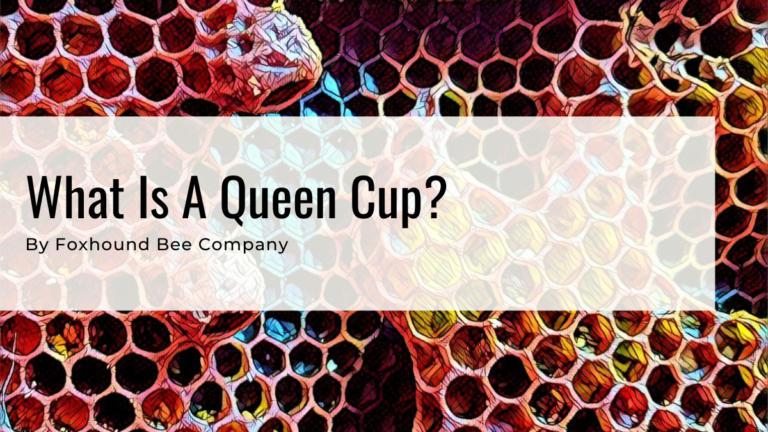When a queen bee dies inside a colony, it can be difficult for the colony. While the queen bee isn’t the leader of a colony, she is responsible for its future.
A colony of bees can survive when one of their worker bees or drones dies, but without the queen, a colony will eventually fail.
Fortunately, a colony of bees is able to deal with this situation and is equipped to solve the problem on its own, but the worker bees only get one chance.
When the bee colony loses its queen, it can be terminal for the colony. So if you are wondering what happens when a queen bee dies, we can explain what happens to the colony.
Table of Contents
Why does a colony lose its queen?
A colony of bees can go queenless for multiple reasons, it can be no fault of the bees because the beekeeper did something to the colony or it can happen naturally.
One of the most common reasons a colony will go queenless is the existing queen didn’t come back from one of her mating flights.
Early in the queen’s life, she will go on dozens of mating flights prior to starting to lay eggs. During these flights, she can get lost, be eaten by an animal, or become injured while mating.
It’s also possible that a queen is missing because two new queens hatched out at the same time and while fighting to decide who the winner is, both queens can be injured.

How a colony replaces its queen
Pheromones
A colony of bees communicates by making noise, tough, vibrations, dancing, and also through smells. There are probably other ways too, but those are the ones that have been discovered.
When a queen bee dies, the bees communicate that the queen is missing through smells or pheromones. It’s actually the chemical signals and the lack of pheromones that causes the bees to replace the queen.
The queen bee creates a pheromone that she passes around the hive from one bee to another, which is her basically saying, “I’M HERE, I’M HERE.” It’s very strong when the queen is young and actually grows “softer” as she ages.
When the bees no longer detect a quality queen pheromone, they go into an emergency queen-rearing mode in the hive.
Worker Bee Eggs
The bees are responsible for taking care of the queen and the eggs she lays go into an emergency mode where they have a bit of controlled panic.
These particular bees are called nurse bees. It only takes a couple of hours for an entire colony to realize their queen is missing. In that short time, the nurse bees will take a regular worker bee egg and give it the resources it needs to become a queen.
Incredibly, a normal worker bee egg can be turned into a queen without only a change in her diet.
Worker bees are females, and the queen is a female; the only thing that makes the queen special is that she has a fully developed reproductive system.
And this happens when the worker bees feed the queen royal jelly. Which is produced by the nurse bees naturally. You can think of it as a superfood for bees.
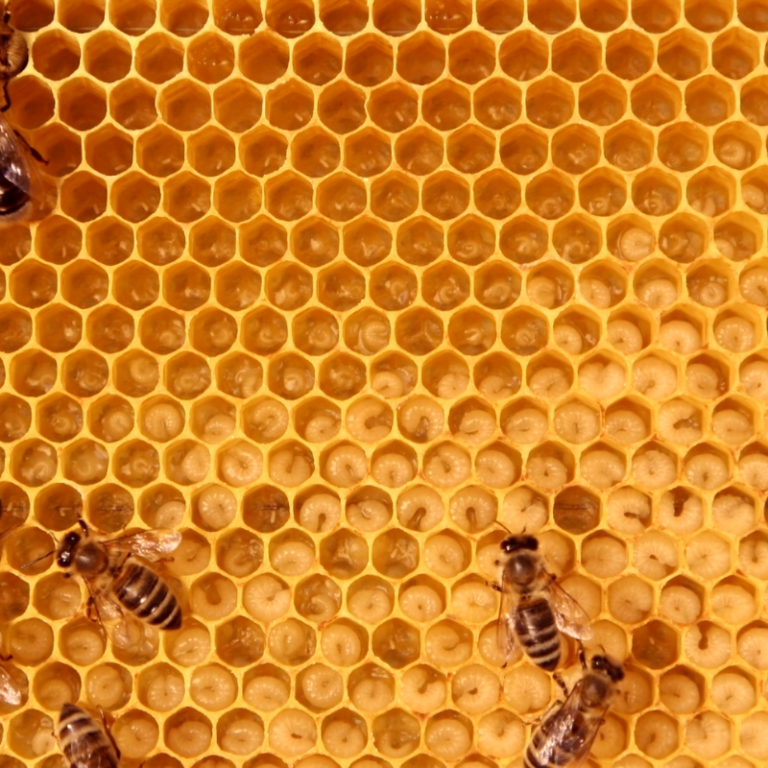

Queen Cups
Queen cups are this funny little upside-down bowl the bees make from their comb. They are commonly found in the brood nest of the colony and are built to make a place to raise a new queen.
A lot of new beekeepers are alarmed when they see these special queen cups, but they shouldn’t be. Just the presence of a queen cup does not mean the colony will swarm or is replacing its aging queen.
Read our blog all about queen cups
These special cells are always empty until they are needed by the colony. When the colony needs a new queen, the worker bees will actually move an egg the queen recently laid to one of these cells.
They can also raise the queen directly in the cell it is already in. But queens need an oversized cell to grow in, so the standard worker bee cell has to be modified to fit her. The workers do this all on their own.
Uncapped Queen Cells
As the young worker bee egg starts turning into a larva, the worker bees will feed it royal jelly constantly. The soon-to-be queen bee will actually be swimming in this food as she absorbs it through her skin.
This royal jelly is so special to queen bees, it will actually cause her to grow quicker than the smaller worker bees. The queen bee only takes 17 days to fully develop, whereas the smaller worker bee takes 21 days.
While the queen grows as a larva and is fed constantly, she is in an uncapped queen cell. The bees leave it uncapped because they will need constant access to her to feed her. The uncapped queen cell looks like an elongated queen cup with one end of it open.
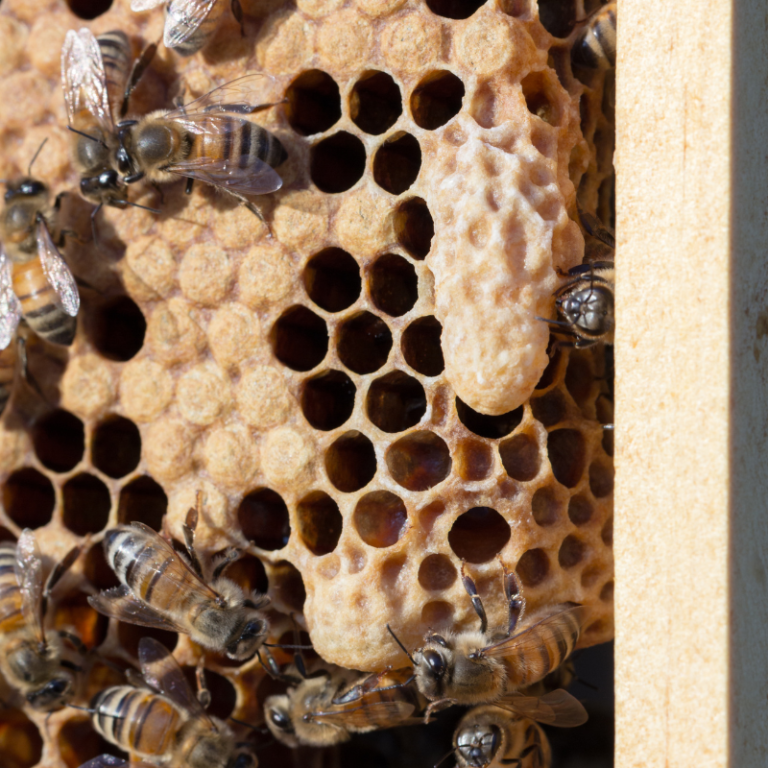
Capped Queen Cell
As the queen bee grows, she will transform from a larva to a pupa. This process is similar to how a caterpillar turns into a butterfly.
The worker bees close to the end of the queen’s cell, leaving her to grow and pupate in the cell with the remaining royal jelly in her cell.
At this point, the only responsibility of the worker bees is to keep the queen’s cell warm until she hatches out. This is the stage most beekeepers will be able to identify the queen cell because it is large, hangs off the edge of the comb, and looks like a small shell on a peanut.
Competition among queens
When the nurse bees start making queen cells, they don’t just make one. These bees know the importance of the queen and make multiple queens just in case one of the queen doesn’t make it or is damaged while growing.
Multiple queen cells are better for the bee colony, but there can only be one queen in the hive. It’s common for multiple new queen bees to to emerge from their cells within a couple of hours of each other.
At this point, it’s more of an MMA fight than a bee hive. The first potential queen bee to hatch will search out the other queen cells and try to kill them before they hatch.
Queen bees have a stinger but don’t have the same stinger their female worker bees have. The queen’s stinger isn’t barbed and is designed to kill other rival queens. So the first queen to hatch out goes on a spree through the hive, trying to kill her competitor queens before each queen emerges.
You can hear a battle cry from the queens as they do this, which is called piping and tooting. I’m not making this up. If two queen bees emerge, the two queens will fight each other to decide the winner.
The loser dies, and the new queen bee will hopefully remain uninjured. You want to be the last remaining queen bee. Close enough is not good enough when you are queen.
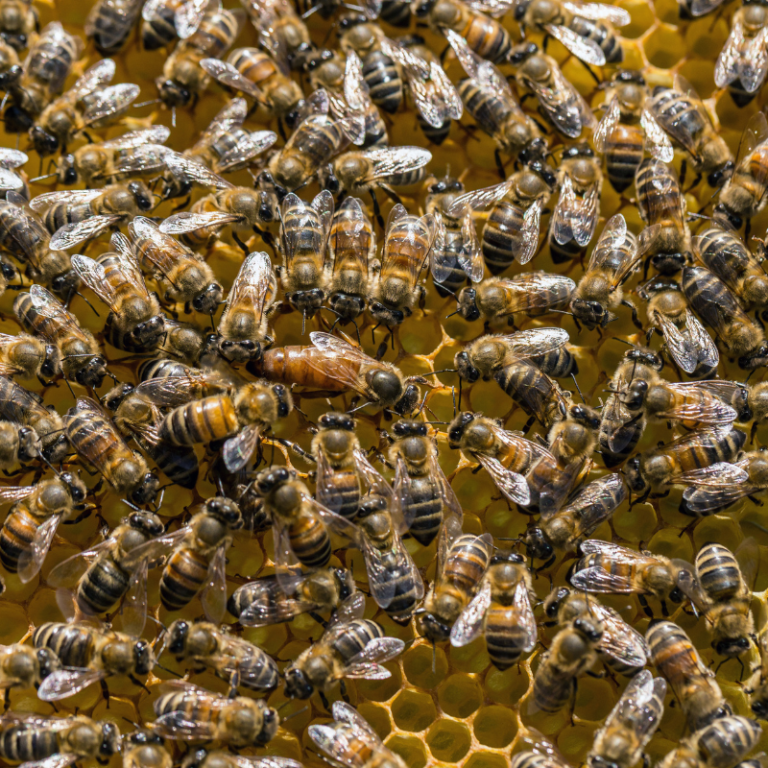
Virgin Queen
If there is a newly hatched queen bee, she cannot start laying eggs right away. Once she is the only remaining queen bee, she starts the next phase. She will prepare to mate over the next day or two before leaving the hive.
Then for the next week, she will venture out multiple times a day to mate with drone bees from other hives. They do this in a Drone Congregation Area (DCA), which is a singles club for bees in the sky.
Over a week or two, depending on the weather, she will mate with as many drones as she can. Ideally, 20-30 different males will mate with her. The more drone bees she mates with, the better she will be.
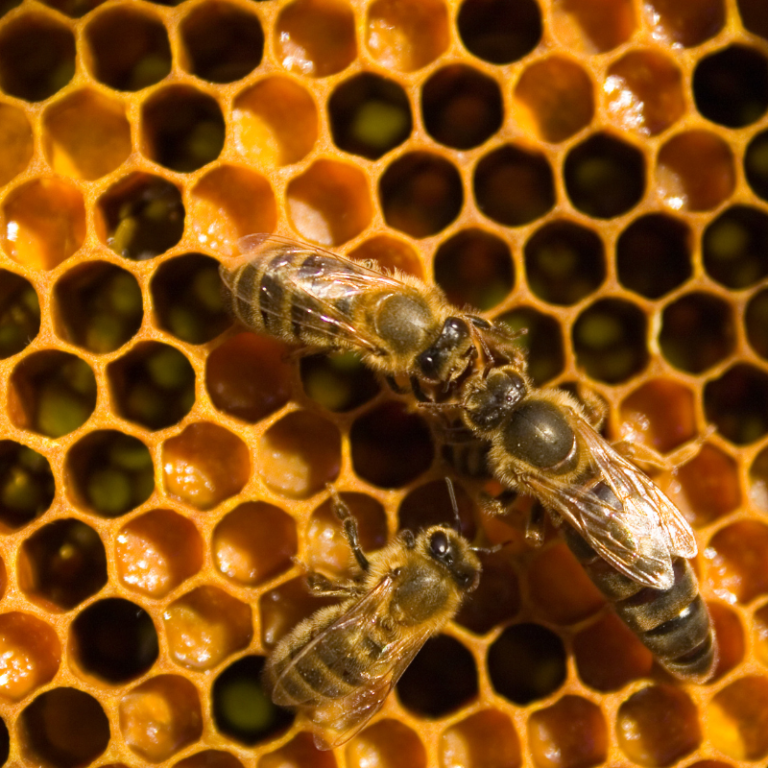
Mated Queen
Only when the queen has successfully mated with enough drones will she start to lay eggs, and the colony will start to build back its population.
In the past few weeks, while she has been growing, emerging, fighting, and mating, the population of the colony gets lower. The absence of a laying queen means there are not any new bees hatching out.
The mated queen will start producing pheromones in the hive as she announces her presence. The eggs that she starts laying will start producing their own pheromones as they develop into larvae.
Both of these pheromones are what the colony was missing initially and prompted the replacement of the queen in the first place.
When these pheromones are produced in a steady supply, all the bees start acting normally and the colony continues its normal work.
A Queenless Colony
A colony of bees has the resources to maintain itself forever, but there are many outside variables that can create a queenless colony. Without the beekeeper’s help, the colony will eventually succumb to pests, starve, or be robbed by another colony. You might think the colony dies immediately, but the bees will try to be productive even without a queen.
The colony does not entirely stop working right away, but as the older bees die, there will not be more bees to replace them. Gradually over the next 2-3 months, the colony will eventually fail. The larger the colony is when it goes queenless, the longer it will survive without a queen. But in reality, 2-3 months is about the maximum a queenless colony will “survive.” When the queen dies, it’s not a good thing and is one of the main reasons a hive dies.
Laying Worker Bees
A queen is a female, and the worker bees are females, but the worker bees cannot lay fertilized eggs. But that won’t keep them from trying. The female worker bee’s ovaries are not fully developed (because she wasn’t fed royal jelly), but she can still lay eggs.
But the eggs she lays will produce male bees and not female bees. A laying worker will do her best to replace the queen, but the hive is still doomed.
Getting Robbed
When the colony’s population gets low enough, the whole colony cannot protect itself against robbing bees, wasps, hornets, etc…
Even with an entrance reducer or a robbing screen, the colony can’t protect itself and will get looted by other bees. Any honey in the hive will basically be stolen; as a side effect, most bees die.
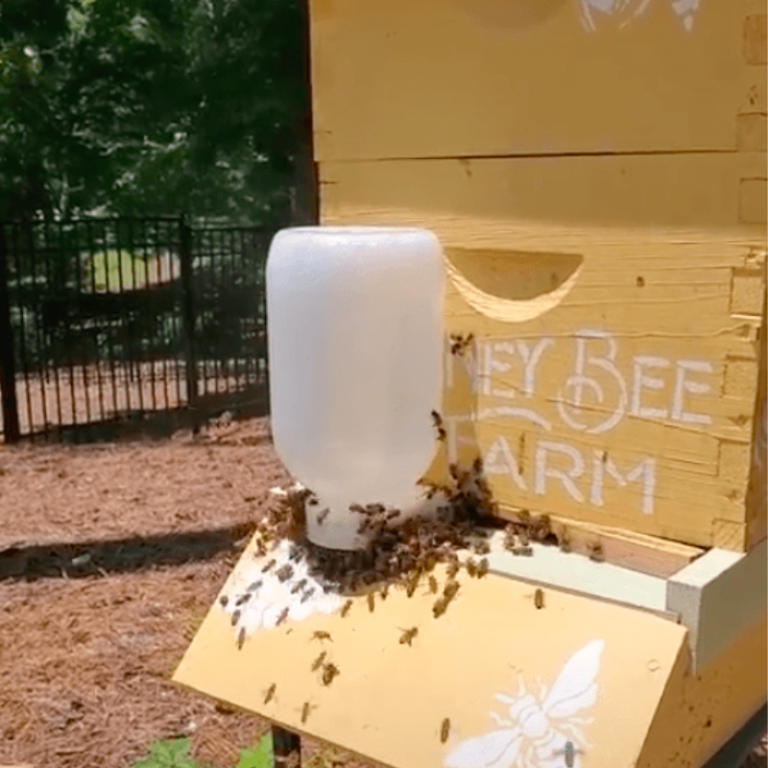
FAQ
Can Bees Survive Without A Queen?
Bees can survive without a queen but only for a short time. Usually, about 3 months is the maximum for a colony to survive without a queen.
How Do Bees Replace Their Queen?
A colony of bees can replace its queen by taking an egg or larva only a few days old and feeding it royal jelly so it can develop into a queen.
How Long Does A Queen Bee Live?
A queen bee has the ability to live for 3-5 years, longer than any other bee in the colony. But queens tend to live 1-3 years on average.
What Happens If There Is No Queen Bee?
If the colony has the resources to raise a new queen, they will do that. If they do not, the colony is due to fail unless the beekeeper gives the colony a new queen or the resources to produce their own.
Can Any Bee Become A Queen?
Only an egg or young larva can be turned into a queen. The worker bees or the drone bees are not able to become queens, even if the colony needs a queen.
Why Do Bees Sometimes Reject A Queen?
A colony communicates through pheromones, so a colony will reject a queen if they don’t recognize her as their own or already have a queen. Mated queens should be introduced to the colony slowly so the queenless colony would accept her.
Do Bees Overthrow Their Queen?
Absolutely! This is really common in a hive, and this happens naturally when the old queen bee is injured or is simply not doing her job well. They will often raise a new queen before they “overthrow” (kill) their existing queen.

